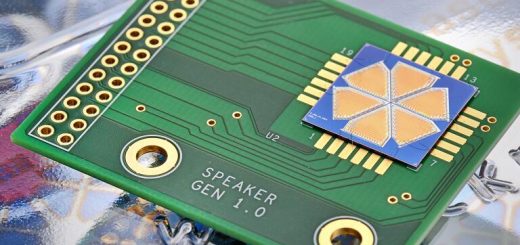Formnext 2018: The 13 Key Trends And Developments For The Additive Manufacturing Industry
Formnext was a great show and as always the complaint rang out that there wasn’t really much new information or new product launches. We’re not the automotive industry. People should expect less whiz-bang products but rather more boring stuff. Boring is the name of the game now. Its a time for dialing things in, an age of the clipboard. What companies are doing is shifting towards actual manufacturing. Car companies are producing tens of thousands of parts; medical companies as well. Aviation is gearing up for broader adoption. This all means that parts have to be qualified, processes have to be studied and people have to do the heavy lifting on industrializing processes. We’re going from high fiving the business development guys to yield calculations by the people in accounting. Everything is slower but bigger now and the exciting time of seeing more 3D printed products is advancing.
1. Post Processing FTW. Anyone can buy a white elephant 3D printer to look pretty at an innovation department office. I get truly happy when I see post processing equipment vendors looking flush and happy. You’re only going to be buying post processing equipment if you want to save time and money depowdering parts. They’re a bellwether for our industry. What we saw at Formnext was much more post processing equipment, much more dedicated 3D printing equipment, many more solutions and a lot of investment by these companies. Its not the most sexy 3D printing thing but post processing is the thing that will make us have consumer grade parts at scale.
2. Automation and extension of machines. A lot of machines are getting powder removal stations while high temperature machines are getting pre-drying for filament. On board cameras and other quality control things are also emerging.
3. Go large (emerging mid format). There were a lot of really large machines such as the containerized colossus but also large metal machines, larger gantry based polymer machines and larger sintering machines. Everyone is going big in 3D Printing trying to get to larger part size and higher throughput. Fewer layers means faster printing and more parts per layer means higher yield. Many 3D printers take a long time to get from one layer to the next while scan/print times are relatively quick. So bigger xy totally makes a lot of sense in 3D printing. I think a lot of these mid format players will be killed off. Many of these machines don’t make sense economically and would be caught up by cheaper large format or better Pro printers.
4. Software. There is a lot more emerging software whether for post processing, analysis, simulation or optimization. Many people want to compete with Materialise the market leader and many are picking niches to live in.
5. Simulation for metal. Meanwhile Materialise itself is taking on simulation in metal the one part where simulation software will save people the most money.
6. The 3D Printing Octagon is happening. More and more companies are trying to control processes, learn about materials, learn about settings and improve the overall experience by closing the 3D printing octagon.
7. Incredible part count reductions. There are some amazing part count reduction projects everywhere and they blew me away. This really could drive AM growth.
8. Internal topology and functional integration are expanding. There are people starting to think of complex parts in a new way and their 3D printing experience is expanding what is makable.
9. Optimization is getting larger and more advanced. This Bugatti engine part made by Fraunhofer is a large chamber that looks like its from the Alien universe. This shows us what one could do with FEA and truly flexible 3D printing design. It will also change how we see things. Don’t read further but look up and guess, do you know what that part is? Its a………………brake caliper.

10. People are doing the heavy lifting. By adding this material to the Digimat software DSM took a year and a half to make 3D printing their material predictable. This is an example of heavy lifting more possible for all of us. The resulting predictability will be what gives car manufacturers the confidence to print millions of parts.
11. People are changing the way we think. SABIC is working on two polycarbonate laser sintering 3D printing materials who would be completely amorphous. This kind of an idea is completely new for 3D printing and would be difficult to predict what this will do for us.
12. Cost-saving technologies are being developed which will make more makeable. LSS gives us a glimpse into a possible future of SLS where surface quality and yield are higher. With an almost full recycle rate of its PEKK material LSS will be much much cheaper to run than traditional sintering. Usually, 30% or a half of everything would have to be thrown away. In some materials all of the unused material would be discarded. This adds up if materials are a between 30 and 800 euro per kilo. With LSS recycling all of the high-performance PEKK, a machine could repay itself in a matter of months.
13. EOS gave us a bold vision, LaserProFusion; two years away. Other companies have given us dreams of futures years away as well. Ten times faster and forty times faster have been heard. Half the price or a tenth of the price has been heard also. The bold new entrants claim all kind of things. Meanwhile the stodgy guys from Krailling have a vision bolder than any other. A million lasers in a laser diode array. Every group of 300 lasers pointed at a one of 3400 mirrors illuminating one point of the print bed with four recoaters supplying new material. And how much time to 3D print one part? 9 seconds per part in the case of the part seen above and below us.
Source: 3D PRINT




Recent Comments